 W
WDer 100. Psalm, Op. 106, is a composition in four movements by Max Reger in D major for mixed choir and orchestra, a late Romantic setting of Psalm 100. Reger began composing the work in 1908 for the 350th anniversary of Jena University. The occasion was celebrated that year with the premiere of Part I, conducted by Fritz Stein on 31 July. Reger completed the composition in 1909. It was published that year and premiered simultaneously on 23 February 1910 in Chemnitz, conducted by the composer, and in Breslau, conducted by Georg Dohrn.
 W
W"An Wasserflüssen Babylon" is a Lutheran hymn by Wolfgang Dachstein, which was first published in Strasbourg in 1525. The text of the hymn is a paraphrase of Psalm 137. Its singing tune, which is the best known part of the hymn and Dachstein's best known melody, was popularised as chorale tune of Paul Gerhardt's 17th-century Passion hymn "Ein Lämmlein geht und trägt die Schuld". With this hymn text, Dachstein's tune is included in the Protestant hymnal Evangelisches Gesangbuch.
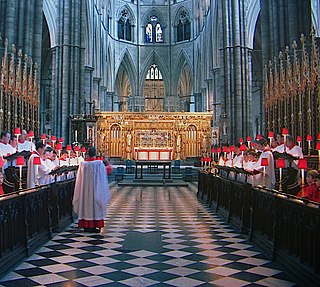 W
WAnglican chant, also known as English chant, is a way to sing unmetrical texts, including psalms and canticles from the Bible, by matching the natural speech-rhythm of the words to the notes of a simple harmonized melody. This distinctive type of chant is a significant element of Anglican church music.
 W
WBeatus vir are the first words in the Latin Vulgate Bible of both Psalm 1 and Psalm 112. In each case, the words are used to refer to frequent and significant uses of these psalms in art, although the two psalms are prominent in different fields, art in the case of Psalm 1 and music in the case of Psalm 112. In psalter manuscripts, the initial letter B of Beatus is often rendered prominently as a Beatus initial.
 W
WThe Becker Psalter is a German metrical psalter authored by the Leipzig theologian Cornelius Becker and first published by Jakob Apel in Leipzig in 1602 under the title Der Psalter Davids Gesangweis. Several composers set the psalms contained in the volume, notably Heinrich Schütz, whose four-part chorales were published in 1628 and revised and expanded in 1661.
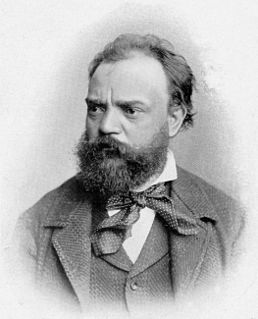 W
WBiblical Songs is a song cycle which consists of musical settings by Czech composer Antonín Dvořák of ten texts, selected by him, from the Book of Psalms. It was originally composed for low voice and piano. The first five songs were later orchestrated by the composer.
 W
WThe Building of the House, op. 79 is an "overture with or without chorus" by Benjamin Britten written in 1967. The overture is notable for the use of Asian-influenced heterophony.
 W
WCantiones sacrae, Op. 4, is a collection of forty different pieces of vocal sacred music on Latin texts, composed by Heinrich Schütz and first published in 1625. The pieces have individual numbers 53 to 93 in the Schütz-Werke-Verzeichnis (SWV), the catalogue of his works. The general title Cantiones sacrae was common at the time and was used by many composers, including Palestrina, Byrd and Tallis and Hans Leo Hassler (1591).
 W
WChandos Anthems, HWV 246–256, is the common name of a collection of eleven anthems, sacred choral compositions written by George Frideric Handel, with the authorship of No. 12 being debated. The texts are psalms and combined psalm verses in English. Handel wrote the anthems as composer in residence at Cannons, the court of James Brydges, who became the First Duke of Chandos in 1719. His chapel was not yet finished, and services were therefore held at St Lawrence in Whitchurch. The scoring is intimate, in keeping with the possibilities there. Some of the anthems rely on earlier works, and some were later revised for other purposes.
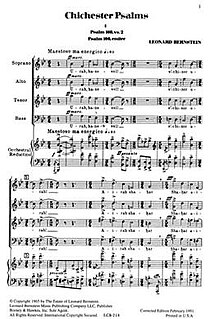 W
WChichester Psalms is an extended choral composition in three movements by Leonard Bernstein for boy treble or countertenor, choir and orchestra. The text was arranged by the composer from the Book of Psalms in the original Hebrew. Part 1 uses Psalms 100 and 108, Part 2 uses 2 and 23, and Part 3 uses 131 and 133. Bernstein scored the work for a reduced orchestra, but also made a version for a smaller ensemble of organ, one harp, and percussion.
 W
W"Dein Lob, Herr, ruft der Himmel aus" is a German Catholic hymn. Adolf Lohmann adapted a 1659 hymn by the Jesuit astronomer Albert Curtz, who paraphrased Psalm 19. The melody appeared in Augsburg in 1669. It was No. 1 in the 1938 hymnal Kirchenlied and is part of the German Catholic hymnal Gotteslob as GL 381.
 W
WDenn er hat seinen Engeln befohlen, MWV B 53, is the incipit of a motet for an eight-part choir a cappella by Felix Mendelssohn. He wrote it in 1844 for the Berlin Cathedral, setting verses 11 and 12 from Psalm 91. Later, Mendelssohn made the motet with accompaniment part of his oratorio Elijah. It was published in 1844, and by Breitkopf & Härtel in 1875 in the complete edition of the composer's works.
 W
WThe Genevan Psalter, also known as The Huguenot Psalter, is a metrical psalter in French created under the supervision of John Calvin for liturgical use by the Reformed churches of the city of Geneva in the sixteenth century.
 W
WThe Hope is a work for brass band, percussion, choir, and organ written in 2001 by Frederik Magle, depicting the Battle of Copenhagen in 1801. It consists of two movements with the first being purely instrumental. The choir enters in the second movement using text from Psalm 27.
 W
WIn convertendo Dominus , sometimes referred to as In convertendo, is a setting by Jean-Philippe Rameau of In convertendo Dominus, the Latin version of Psalm 126,. It is listed as RCT 14 in the Rameau Catalogue Thématique of Sylvie Bouissou and Denis Herlin.
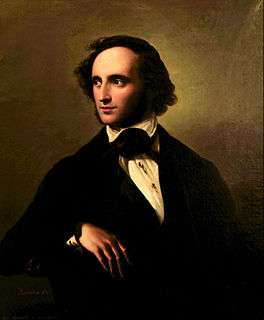 W
WJauchzet dem Herrn, alle Welt, WoO. 28, is an anthem for choir a cappella, a setting of Psalm 100 in German composed by Felix Mendelssohn in 1844. It was published in 1855 after the composer's death. It is the most popular setting of Psalm 100 by Mendelssohn, who also wrote a four-part motet in Latin, "Jubilate Deo", as part of Three Motets, Op. 69, in 1847 for use in the Church of England, which adds a doxology to the psalm text. He set the psalm again, but with paraphrased text by Ambrosius Lobwasser, "Ihr Völker auf der Erde all", as part of Sieben Psalmen, harmonising melodies from the Genevan Psalter.
 W
WLaetatus sum, Op. 45, is a musical setting of Psalm 122 in Latin by Jules Van Nuffel, composed in 1935 for mixed choir and organ.
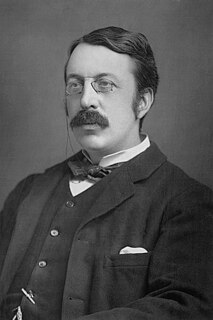 W
WThree Latin Motets, Op. 38, is a collection of three sacred motets based on Latin texts for mixed unaccompanied choir by Charles Villiers Stanford, comprising Justorum animae, Coelos ascendit hodie and Beati quorum via. The texts come from different sources, and the scoring is for four to eight parts. They were published by Boosey & Co in 1905. The works, some of Stanford's few settings of church music in Latin, have remained in the choral repertoire internationally and are performed in liturgies and concert.
 W
W"The Lord's my Shepherd" is a Christian hymn. It is a metrical psalm commonly attributed to the English Puritan Francis Rous and based on the text of Psalm 23 in the Bible. The hymn first appeared in the Scottish Psalter in 1650.
 W
WA metrical psalter is a kind of Bible translation: a book containing a metrical translation of all or part of the Book of Psalms in vernacular poetry, meant to be sung as hymns in a church. Some metrical psalters include melodies or even harmonizations. The composition of metrical psalters was a large enterprise of the Protestant Reformation, especially in its Calvinist manifestation.
 W
WMiserere is a setting of Psalm 51 by Italian composer Gregorio Allegri. It was composed during the reign of Pope Urban VIII, probably during the 1630s, for the exclusive use of the Sistine Chapel during the Tenebrae services of Holy Week, and its mystique was increased by unwritten performance traditions and ornamentation. It is written for two choirs, of five and four voices respectively, singing alternately and joining to sing the ending in 9-part polyphony.
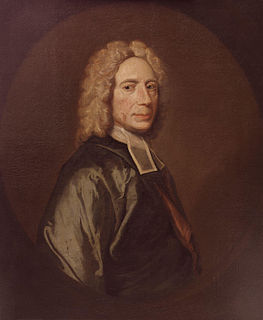 W
W"Our God, Our Help in Ages Past" is a hymn by Isaac Watts in 1708 that paraphrases the 90th Psalm of the Book of Psalms. It originally consisted of nine stanzas; however, in present usage the fourth, sixth, and eighth stanzas are commonly omitted to leave a total of six. In 1738, John Wesley in his hymnal, Psalms and Hymns, changed the first line of the text from "Our God" to "O God." Both Watts' wording and Wesley's rewording remain in current use.
 W
W"Praise, my soul, the King of heaven" is a Christian hymn. Its text, which draws from Psalm 103, was written by Anglican divine (clergyman) Henry Francis Lyte. First published in 1834, it endures in modern hymnals to a setting written by John Goss in 1868, and remains one of the most popular hymns in English-speaking denominations.
 W
WPsalm 150 is a psalm setting by César Franck. He wrote the composition, setting Psalm 150 for four-part choir, orchestra and organ, in 1883. It was published in 1896 by Breitkopf & Härtel. Carus-Verlag published an arrangement for choir, strings and organ. The incipit in French is "Halleluiah! Louez le Dieu, caché dans ses saints tabernacles".
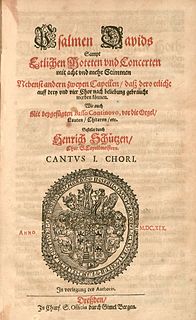 W
WPsalmen Davids is a collection of sacred choral music, settings mostly of psalms in German by Heinrich Schütz, who had studied the Venetian polychoral style with Giovanni Gabrieli. Book 1 was printed in Dresden in 1619 as his Opus 2. It comprises 26 individual settings, which were assigned numbers 22 to 47 in the Schütz-Werke-Verzeichnis (SWV). Most of them use the text of a complete psalm in the translation by Martin Luther.
 W
WThe Te Deum in D major, "Queen Caroline" is a canticle Te Deum in D major composed by George Frideric Handel in 1714.
 W
WJohn Rutter's Requiem is a musical setting of parts of the Latin Requiem with added psalms and biblical verses in English, completed in 1985. It is scored for soprano, mixed choir and orchestra or chamber ensemble.
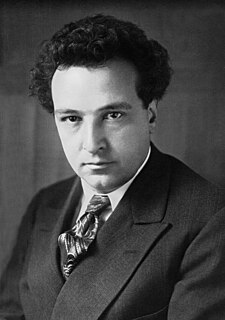 W
WLe Roi David was composed in Mézières, Switzerland, in 1921 by Arthur Honegger, as incidental music for a play in French by René Morax. It was called dramatic psalm, but has also been performed as oratorio, without staging. The plot, based on biblical narration, tells the story of King David, first a shepherd boy, his victories in battle, relationship to Saul, rise to power, adultery, mourning of his son's death, and finally his own death. The work has 27 musical movements, some instrumental, most for voices and orchestra. A narrator connects the scenes, soloists take different roles.
 W
WService in B-flat major, Op. 10, is a collection of Anglican church music by Charles Villiers Stanford for mixed choir and organ containing the Canticles for each of the principal services of the Anglican Church. Stanford set the traditional liturgical texts in English in 1879 when he was the organist of Trinity College, Cambridge. They were published by Novello in 1902. Stanford orchestrated the work in 1903, with additional organ.
 W
WSicut cervus is a motet for four voices by Giovanni Pierluigi da Palestrina. It sets the beginning of Psalm XLI (42) in the Latin version of the Psalterium Romanum rather than the Vulgate Bible. The incipit is "Sicut cervus desiderat ad fontes" followed by a second part "Sitivit anima mea". It was published in 1604 in Motecta festorum, Liber 2, and has become one of Palestrina's most popular motets, regarded as a model of Renaissance polyphony, expressing spiritual yearning.
 W
WSix Motets, Op. 82, are six motets for choir a cappella by Friedrich Kiel. He set selected psalm verses in German. The motets were published in 1883 by Bote & Bock, dedicated to H. A. Köstlin, as Sechs Motetten für gemischten Chor a cappella.
 W
WSuper flumina Babylonis, Op. 25, is a musical setting of Psalm 137 in Latin by Jules Van Nuffel, composed in 1916 for mixed choir and organ.
 W
WSymphoniae sacrae I is a collection of different pieces of vocal sacred music on Latin texts, composed by Heinrich Schütz, published in 1629. He set mostly psalms and excerpts from the Song of Solomon for one to three voices, with various instruments and continuo. Its twenty pieces were assigned 257 to 276 in the Schütz-Werke-Verzeichnis (SWV), the catalogue of his works. Two later volumes came, but with German texts: Symphoniae sacrae II in 1647 and Symphoniae sacrae III in 1650.
 W
WThe Symphony of Psalms is a three-movement choral symphony composed by Igor Stravinsky in 1930 during his neoclassical period. The work was commissioned by Serge Koussevitzky to celebrate the 50th anniversary of the Boston Symphony Orchestra. The symphony derives its name from the use of Psalm texts in the choral parts.
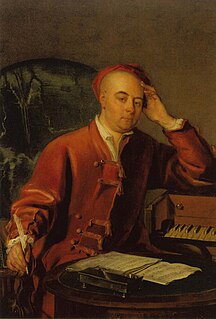 W
WUtrecht Te Deum and Jubilate is the common name for a sacred choral composition in two parts, written by George Frideric Handel to celebrate the Treaty of Utrecht, which established the Peace of Utrecht in 1713, ending the War of the Spanish Succession. He composed a Te Deum, HWV 278, and a Jubilate Deo, HWV 279. The combination of the two texts in English follows earlier models. The official premiere of the work was on 13 July 1713 in a service in St Paul's Cathedral in London.
 W
WVesperae solennes de confessore , K. 339, is a sacred choral composition, written by Wolfgang Amadeus Mozart in 1780. It is scored for SATB choir and soloists, violin I, violin II, 2 trumpets, 3 trombones colla parte, 2 timpani, and basso continuo.
 W
WVesperae solennes de Dominica, K. 321, is a sacred choral composition, written by Wolfgang Amadeus Mozart in 1779. It is scored for SATB choir and soloists, violin I and II, 2 trumpets, 3 trombones colla parte, 2 timpani, and basso continuo.
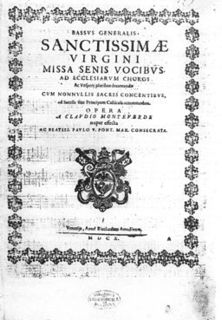 W
WVespro della Beata Vergine, SV 206, is a musical setting by Claudio Monteverdi of the evening vespers on Marian feasts, scored for soloists, choirs, and orchestra. It is an ambitious work in scope and in its variety of style and scoring, and has a duration of around 90 minutes. Published in Venice as Sanctissimae Virgini Missa senis vocibus ac Vesperae pluribus decantandae, cum nonnullis sacris concentibus, ad Sacella sive Principum Cubicula accommodata, it is sometimes called Monteverdi's Vespers of 1610.